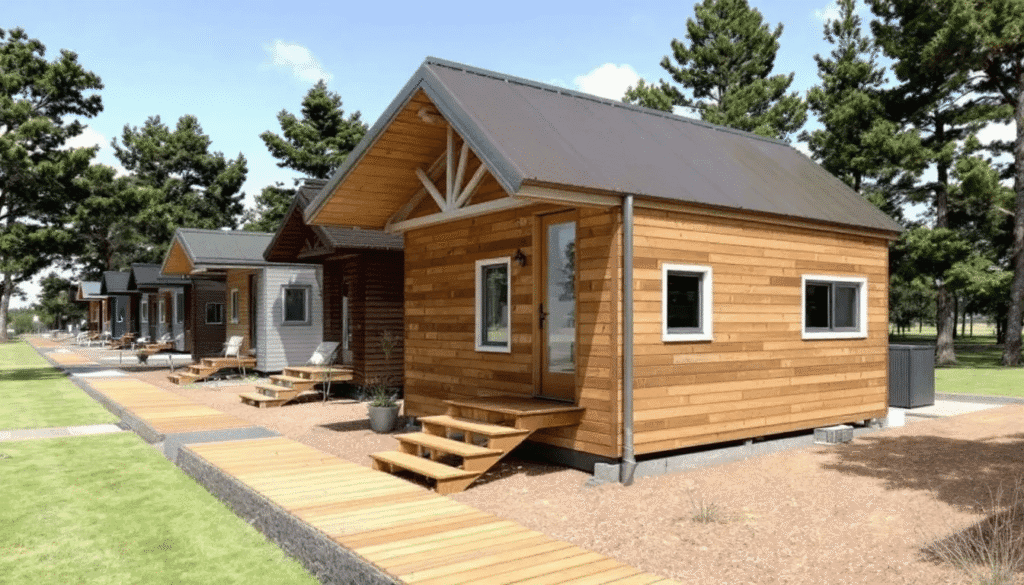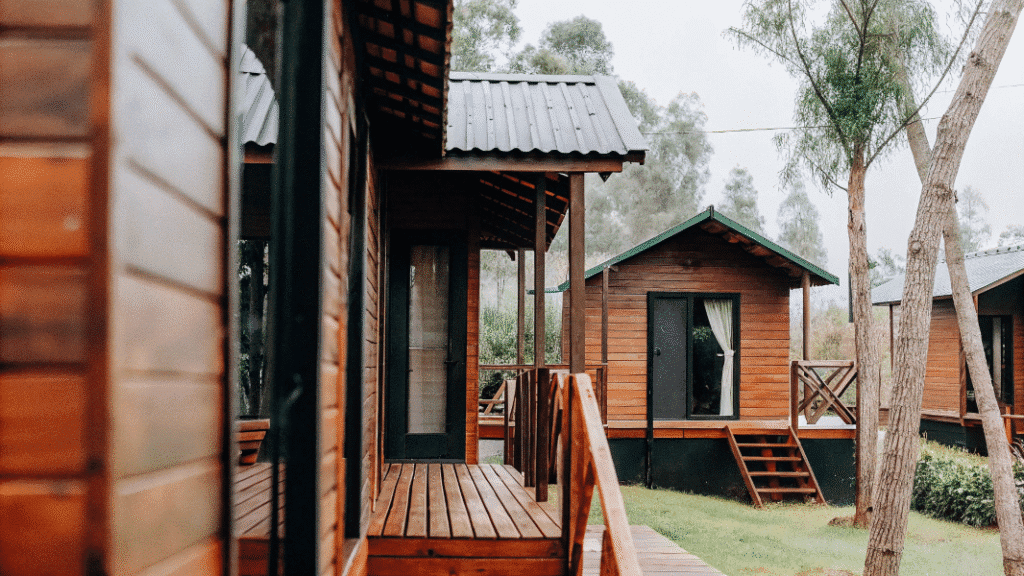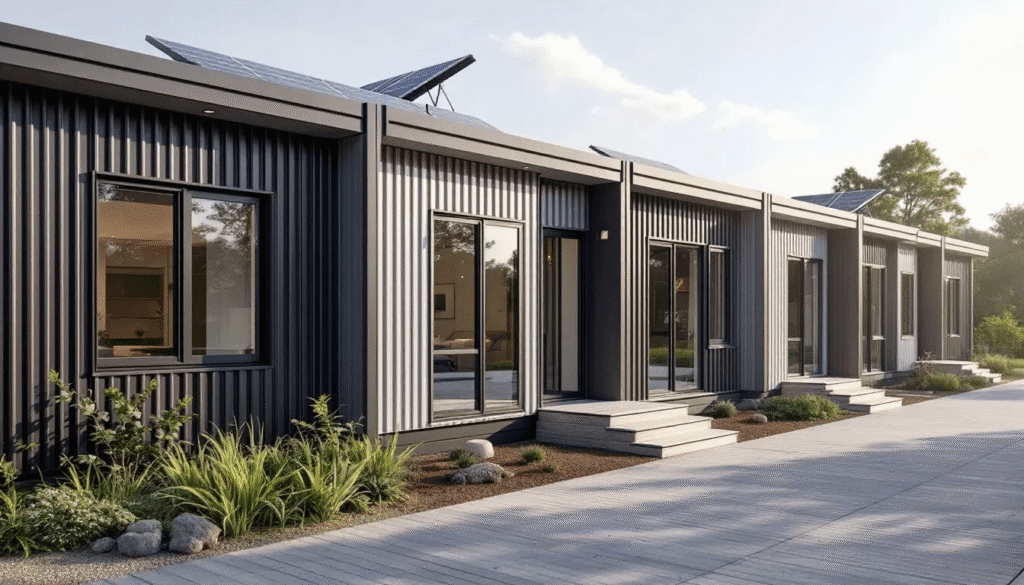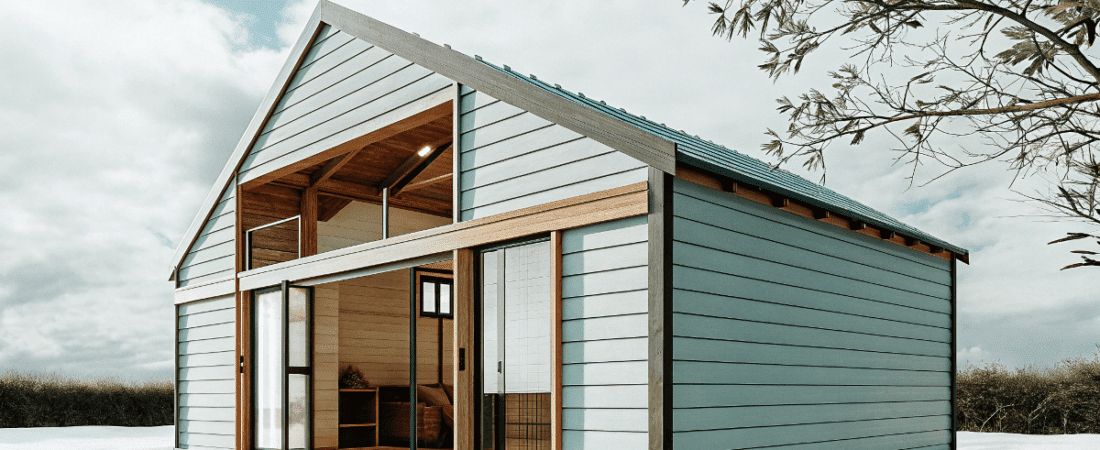Are you dreaming of cozy modular cottage homes that doesn’t cost too much?
Wondering if modular cottage homes are the answer?
You’re in the right place.
Let’s chat about what makes these homes special.
Key Points:
- What are Modular Cottage Homes?: Modular cottage homes are built in sections called modules in a factory, then assembled on-site, allowing for faster construction, energy efficiency, and cost savings.
- Benefits of Modular Homes: Modular homes combine high-end quality and affordability, with sustainability and durability, thanks to sustainable materials and flexible design options.
- The Modular Home Building Process: These homes are constructed indoors in a factory for quality control, then transported for final assembly on your land, ensuring timely completion without weather-related delays.
- Designing Your Dream Modular Home: Modular homes can be fully customized with various floor plans, layouts, finishes, and smart features, making it easy to create a home that suits your needs and style.
- Why Choose Modular Cottage Homes?: Modular cottage homes offer a blend of affordability, sustainability, quality, and quick construction, making them an attractive alternative to traditional building methods.
What are Modular Cottage Homes?

Modular cottage homes are built in sections, ensuring strict quality control and faster completion times.
We call these sections “modules.”
They’re put together in a factory.
Once they’re ready, they’re moved to your land.
There, they get fully assembled.
This means you can move in sooner.
These homes are energy-efficient, saving you money, and were created to meet the growing demand for functional and luxurious living spaces. Their energy efficiency also helps reduce utility costs over time, making them an economical choice for homeowners.
The building happens indoors.
No weather delays here!
Benefits of Modular Homes

Affordable Luxury
Modular homes offer high-end quality.
Collaboration with business partners has led to the development of these high-quality, affordable homes.
But, they usually cost less. The average cost to build a custom modular home can be as low as $135-$150 per square foot.
Skilled workers build them with care.
They use quality, sustainable materials. Smart Cottage homes are built with 33% more lumber than HUD Code requires.
You get a strong, lasting home.
There’s a wide selection of floor plans.
You can create your dream modular home.
Sustainability
Modular homes focus on energy efficiency.
This lowers your bills.
And, it’s better for the planet.
These homes are designed to maximize usable space, making them both functional and comfortable.
They have a small footprint.
Perfect for eco-friendly living.
You get endless options for customization.
Make your home look great and be green.
Quality and Durability
Modular homes are built to last.
Adjustments to floor plans can create additional functional space, enhancing the livability of these homes.
Quality and durability are key.
High-quality materials ensure they stand the test of time.
Enjoy peace of mind with a strong home.
The Modular Home Building Process

Factory-Built Construction
These homes start in a factory.
The company you buy from controls the quality every step of the way.
This means high standards and attention to detail.
Plus, no weather-related delays.
Your home finishes on time.
Designing Your Dream Modular Home
Customization Options
These homes are fully customizable.
Start from the ground up.
Choose from a wide selection of floor plans. Smart Cottage homes can be built to any code and set up almost anywhere.
Pick the layout that fits your needs.
Add bedrooms or upgrade finishes.
The possibilities are endless.
Smart Cottage Features
Smart cottage homes are efficient.
They fit any budget.
Energy-efficient appliances save money.
Sustainable materials make them eco-friendly.
Customize them to match your style.
Why Choose Modular Cottage Homes?
Unique Benefits
Modular cottage homes mix affordability, sustainability, and quality.
Energy efficiency and durability are top priorities.
Customize your dream home from scratch.
Comparison to Traditional Construction
Traditional homes take longer to build.
Weather can delay construction.
Modular homes are quicker and often cheaper.
They’re built indoors, away from bad weather.
Modular Homes vs. Stick-Built Homes
When deciding between modular homes and stick-built homes, it’s essential to understand the key differences. Modular homes are constructed in a factory setting, where each section, or “module,” is built with precision and then transported to the site for assembly. This method allows for greater control over the construction process, reducing waste and ensuring consistent quality. Additionally, modular homes are often more energy efficient, meeting or exceeding local building codes.
In contrast, stick-built homes are constructed entirely on-site from the ground up. This traditional method can be more time-consuming and is susceptible to weather-related delays, which can increase costs. However, stick-built homes offer unparalleled customization, allowing homeowners to tailor every aspect of their dream home to their specific needs and preferences.
Cost is another significant factor. On average, building a custom modular home costs around $135-$150 per square foot, while stick-built homes can range from $150-$300 per square foot. The final cost of a modular home can vary based on the design’s complexity, size, and the materials and finishes chosen.
Ultimately, the choice between a modular home and a stick-built home depends on individual needs and preferences. Modular homes provide a more efficient and affordable option, while stick-built homes offer greater customization and a traditional construction experience.
Find Your Perfect Smart Cottage Home
In conclusion, both modular homes and stick-built homes present viable options for those looking to build or purchase a new home. Modular homes stand out for their efficiency, affordability, and energy efficiency, while stick-built homes offer extensive customization and a traditional building process. By weighing the advantages and disadvantages of each, you can make an informed decision that aligns with your needs and budget.
FAQ’s
How do modular cottage homes compare to traditional stick-built homes?
Modular homes are typically built faster, more cost-effectively, and with higher consistency because they are constructed indoors. Traditional stick-built homes take longer, are more weather-dependent, and generally offer more extensive customization but often at a higher cost.
Can I customize my modular home to fit my needs?
Yes, modular homes are fully customizable, allowing you to choose from a variety of floor plans, layouts, finishes, and even smart features. You can add bedrooms, upgrade materials, and tailor the design to match your style.
How does the modular home building process work?
The process starts with constructing the home indoors at a factory to maintain quality standards and avoid weather-related delays. The completed modules are then transported to the site for assembly, allowing for timely project completion.
What are the main benefits of choosing a modular home?
Modular homes offer high-end quality at an affordable price, are energy-efficient to lower utility bills, and are built with durable, sustainable materials. They also provide flexibility in design and customization options.
What are modular cottage homes and how are they built?
Modular cottage homes are built in sections called modules in a factory, where they are constructed under strict quality control before being transported to your land for final assembly. This process ensures faster completion, energy efficiency, and consistent quality.



